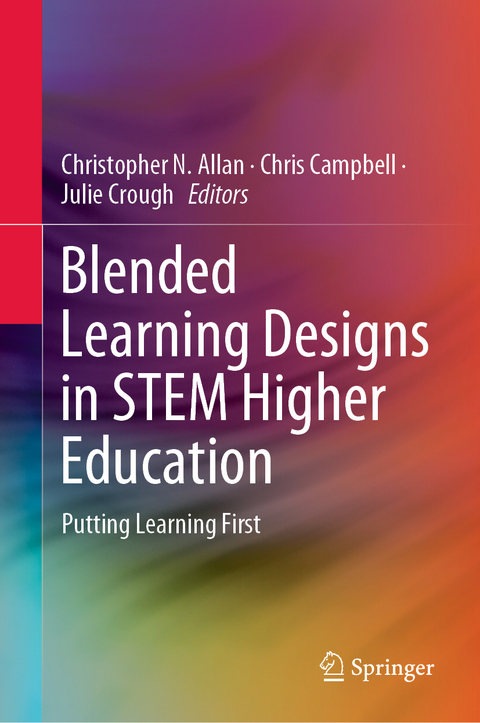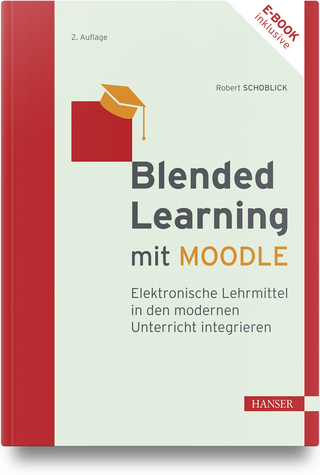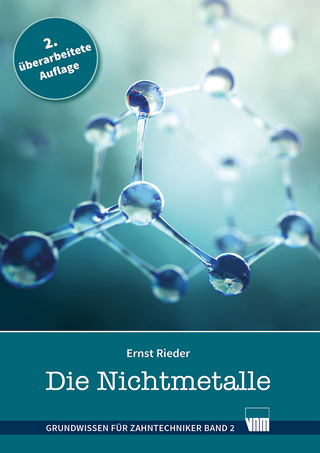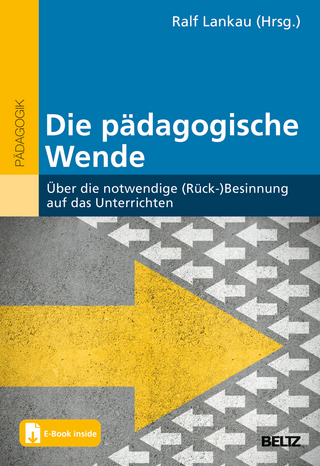
Blended Learning Designs in STEM Higher Education
Springer Verlag, Singapore
978-981-13-6981-0 (ISBN)
This book offers a set of learning principles to support the design of rich learning experiences in Science, Technology, Engineering and Mathematics (STEM) higher education, including detailed evaluations and discussions for a variety of science subjects. Further, it presents a professional learning framework that can be used to support the implementation of blended learning technologies to increase buy-in from academic staff, to support grass roots initiatives, to develop a sense of community, and to sustain change. The principles developed here will help readers to think about blended learning from a learner’s perspective, put learning first, and develop activities that will help learners achieve better learning outcomes.
In addition, the book addresses how to design rich, evidence-based, blended learning experiences that support learning. It demonstrates a range of learning principles in practice, with step-by-step instructions, and includes templates, supporting material,instructions and other resources to help teachers embed and adapt designs in their own subject. Readers will be equipped with an expanded toolkit of resources, designs, ideas and activities that can be directly applied in a variety of subject areas.
Christopher N. Allan is a Learning and Teaching Consultant for Griffith Sciences, Griffith University. Christopher has extensive experience in blended learning, learning design and the implementation of technology to support and enhance learning and teaching. He has 20 years’ experience in all forms of education and more than 10 years working in Higher Education. His contributions have recently been recognized by his being named a Senior Fellow with the Higher Education Academy. He is also a Senior Fellow of the Griffith Learning and Teaching Academy. Chris Campbell currently works at the Centre for Learning Futures at Griffith University, Brisbane, Australia. As an emerging research leader, she has been involved in numerous grants and projects involving digital and emerging technologies. Her skills in implementing and trialing new technologies are documented in over 70 publications, where she has conducted research on online tools in educational settings,including LAMS, Second Life and Assistive eXtra Learning Environments, as well as technology integration, mobile learning and augmented reality. Chris has previously taught first-year pre-service teachers and trialed interactive and emerging technologies in lectures. In 2016, Chris was a Queensland-Smithsonian Fellowship holder, and investigated the Smithsonian Learning Lab and its implications for teachers. Julie Crough is a Learning and Teaching Consultant (Curriculum) for Griffith Sciences as well as a Senior Fellow of the Higher Education Academy and Griffith Learning and Teaching Academy. Her extensive experience and background in science education span more than 25 years of working collaboratively with, and for, higher education institutions and scientific research organisations on curriculum development and innovation. Her curiosity and drive to learn (BSc Hons, Grad Dip Ed, MSc and DTEM) is foregrounded by her passion for integrating active and authentic learning experiences and learning technologies in STEM higher education.
1 Introduction.- 2 Creating a successful implementation of PebblePad: The university context.- 3 What is the purpose? Using blended learning designs to purposefully focus on student engagement, support and learning.- 3 On the CUSP (a community of usable scholarly practice): A safe space for blended learning and teaching discussion, design and practice.- 4 Stimulating curiosity in STEM higher education: Connecting practices and purposes through ePortfolios.- 5 Creating order from (potential) chaos: Embedding employability with the Griffith Sciences PLUS program.- 6 Embedding employability into an Information Technology curriculum using PebblePad: A practice report.- 7 Peer Assisted Study Sessions (PASS): Recognising employability through PebblePad.- 8 Embedding employability: A case study using ePortfolios in studio learning and teaching.- 9 ePortfolios: Integrating learning, creating connections and authentic assessments.- 10 Implementing PebblePad into Forensic Chemistry: A whole of program approach.- 11 Challenges of student equity and engagement in a HyFlex course.- 12 Engaging with STEM students: Successes and challenges in course design.- 13 Rethinking flight education: Student use of reflection and video creation to enhance learning.- 14 Supporting the M in STEM using online maths support modules.- 15 The use of PebblePad ePortfolio as a tool for teaching first year engineering.- 16 use of PebblePad to develop scaffolded critical reflection in scientific practice.- 17 Designing rich, evidence-based learning experiences in STEM higher education.
| Erscheinungsdatum | 27.04.2019 |
|---|---|
| Zusatzinfo | 49 Illustrations, color; 10 Illustrations, black and white; XVII, 363 p. 59 illus., 49 illus. in color. |
| Verlagsort | Singapore |
| Sprache | englisch |
| Maße | 155 x 235 mm |
| Themenwelt | Schulbuch / Wörterbuch ► Unterrichtsvorbereitung ► Unterrichts-Handreichungen |
| Geisteswissenschaften ► Psychologie ► Pädagogische Psychologie | |
| Sozialwissenschaften ► Pädagogik ► Allgemeines / Lexika | |
| Sozialwissenschaften ► Pädagogik ► Erwachsenenbildung | |
| Sozialwissenschaften ► Pädagogik ► Schulpädagogik / Grundschule | |
| Schlagworte | Authentic Assessment • Blended Learning • design principles • Embedding Employability Skills • Engineering Education • Learning Design • mathematics education • Online Learning and Tools • PebblePad • STEM Higher Education • Support Employability |
| ISBN-10 | 981-13-6981-X / 981136981X |
| ISBN-13 | 978-981-13-6981-0 / 9789811369810 |
| Zustand | Neuware |
| Informationen gemäß Produktsicherheitsverordnung (GPSR) | |
| Haben Sie eine Frage zum Produkt? |
aus dem Bereich


